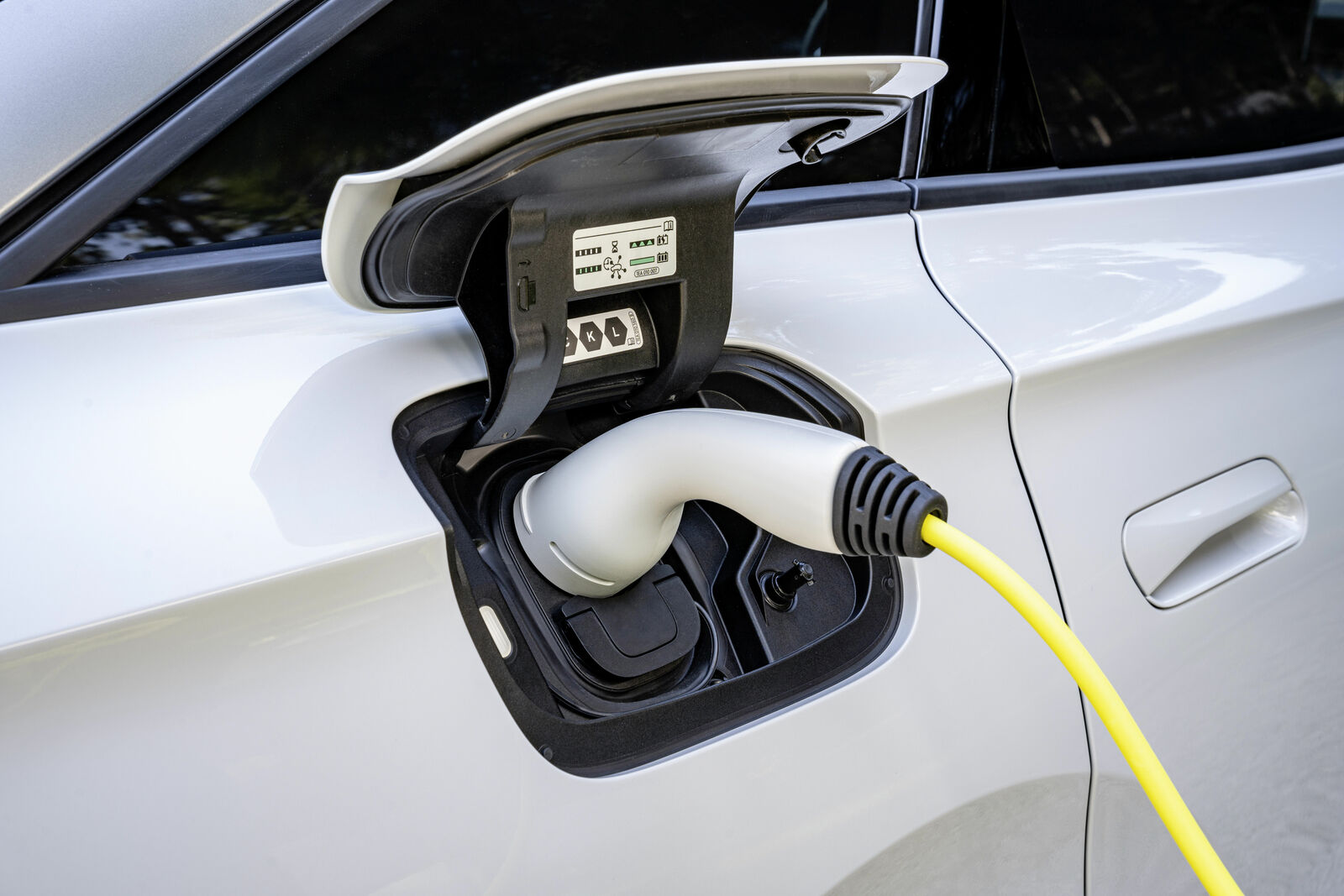Long ranges. The launch version of the ID.7 will be available with a new, highly efficient drive system, known within Volkswagen as APP 550. The new electric drive motor is the central module of this efficient drive unit. It is the most powerful and highest-torque electric drive motor in a Volkswagen ID. model so far. It forms a module that is integrated into the driven rear axle together with the dual-stage one-speed gearbox and pulse inverter – the intelligent drive control. The lithium-ion battery located in the sandwich floor is responsible for energy supply in the ID.7. On board the launch version of the ID.7 Pro, the battery offers a net energy content of 77 kWh (gross: 82 kWh). A second version of the battery with an even greater energy content is set to follow. The ID.7 Pro with its 77 kWh battery already underlines its suitability for long-distance driving with a combined WLTP consumption of 16.3 to 14.1 kWh/100 km and a WLTP range of up to 621 kilometres∗.
Great agility. The ID.7 offers a highly dynamic drive. An indicator of this is its ability to accelerate from 0 to 100 km/h in 6.5 seconds∗∗∗. However, more significant is how spontaneously the 210 kW∗∗ electric drive motor delivers the maximum system torque of 545 Nm to the drive axle. Its top speed is limited at 180 km/h.
Rapid charging. As quickly as the ID.7 is able to accelerate, it can also absorb energy at the same rate: at DC quick-charging stations, enough power for up to 204 kilometres according to WLTP) of driving flows into the battery in just 10 minutes with a charging capacity of up to 175 kW∗∗∗∗ under optimum conditions. A battery with a charge level as low as 10 per cent can be charged to 80 per cent again in about 28 minutes. While the vehicle is on the road, a new charging and thermal management function makes sure the battery is pre-conditioned ahead of the next DC charging stop. Thanks to this pre-conditioning, the ID.7 is supplied with energy again as quickly as possible. The battery is brought to the optimum temperature ahead of the charging stop so that it can be charged at maximum power. This enables the charging time to be reduced by several minutes, particularly in winter. When route guidance by the navigation system with the Electric Vehicle Route Planner is active, pre-conditioning is started automatically on the way to the next quick-charging station. Without active route guidance, the function can also be manually activated using the charging menu in the infotainment system.
The modules in the APP 550 The essential elements of the particularly efficient drive are the electric drive motor (three-phase permanent magnet synchronous motor), the two-stage one-speed gearbox, and the inverter (power and control electronics). The increased power and efficiency of the electric drive motor in the ID.7 are the result of details such as a rotor with strong permanent magnets that offer a high thermal load capacity, a further-developed stator with a large effective number of windings in combination with maximum wire cross-section, a water heat sink for the outside of the stator, and a new, combined oil and water cooling system that also ensures higher thermal stability. The thermal stability is safeguarded by a new inverter generation, and the higher thermal load capacity is an elementary contributing factor to the increased efficiency of the new drive. Numerous gearbox components have also been friction-optimised and reinforced, and thus adapted to the high power and torque values.
The new inverter in detail. Volkswagen developed the new inverter, including its software, entirely in-house. The module is multi-talented: for example, it converts the direct current (DC) stored in the battery into the three-phase alternating current (AC) needed by the electric drive motor. It also controls the complete energy flow between the battery and motor. Every acceleration or recuperation process is processed by this electronic brain of the drive. During recuperation, the inverter converts the generated alternating current into direct current that is then stored in the battery. It additionally monitors the temperature of the electric motor. This means the inverter – also referred to as the power and control electronics – has a decisive influence on efficiency, which is particularly high in the ID.7.
